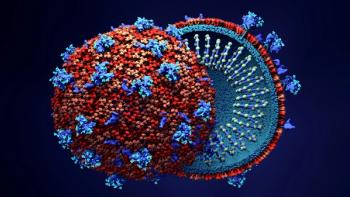
Hiding Out in the Brain: Microglia Harbor Stable, Replication-Competent HIV
University of North Carolina researchers found stable and replication-competent HIV in the microglia in the brain even in people with HIV who had been taking antiretroviral therapy for a long time.
Does HIV hide out in the brain? Researchers have been debating the answer to that question for years.
“There is a long-term argument about whether there exist replication-competent HIV reservoirs in the central nervous system in people with HIV under ART (antiretroviral therapy) ,” says
Looking for answers, Tang and colleagues extracted living brain tissue to conclude that specialized immune cells in the brain can harbor latent but replication-competent HIV. They reported their
“There is an ethical challenge to access the human brain. To examine whether there is replication-competent HIV, we started our study with the ART (antiretroviral therapy)-suppressed rhesus macaques and then translated our studies and findings into PWH (people with HIV) on ART enrolled in the ‘Last Gift’ Program at UC San Diego,” explains
The participants in this cohort were at the end of their lives and agreed to donate their tissues for HIV-related studies to accelerate the current efforts to cure HIV.The team at University of California San Diego has developed a rapid research autopsy protocol so that it can be completed within six hours after a person with HIV dies. The brain tissues were delivered to University of North Carolina in Chapel Hill via overnight shipping for further process the tissues for reservoir cell isolation and purification.
Their research focused on
“There were many exciting and surprising findings,” Tang says. “Brain microglia can be isolated and cultured ex vivo, which slowly grew for a few months, which provide a time window for us to further examine possible silent HIV reservoir in them; there exists stable and replication-competent HIV in the brain microglia even from PWH receiving long-term ART with undetectable viremia in the plasma. Viral particles were recovered from PWH microglia whereas the near full-length HIV genome was sequenced; and unlike in the peripheral blood, no HIV can be recovered from CNS T cells.”
Furthermore, the researchers discovered that latent HIV in the brain microglia is controlled differently from T cells, in which it was largely regulated by epigenetic modulation but not by NF-κB signaling. The latter is particularly important for the regulation of HIV latency in the T cells isolated from the peripheral blood.
The researchers concluded that there exist replication-competent HIV reservoirs in the human brain which hide in the brain microglia, the unique resident immune cells in the brain. Since microglia are long-lived for decades and can self-renew in the brain, HIV in these unique brain-resident immune cells can be persistent and serve as a rebound source when ART is interrupted.
“Our study clearly showed that there are stable HIV reservoirs in the human brain, which could serve as the viremia rebound source,” Tang says. “If so, the CNS reservoir has to be targeted to cure HIV. It is also interesting that there is residual but persistent active HIV transcription in the brain microglia, which may be a cause of neuroinflammation, commonly occurring in PWH with HIV-associated neurocognitive disorders (HAND). This residual and persistent HIV transcription needs to be seriously considered for the development of therapeutic intervention for the cure of HAND
With the microglia isolated from PWH, the researchers noted there was more to understand in the future.
“First, how HIV achieves its persistence in the brain microglia. Is there any unique signaling pathway that controls the reservoir cells long-lived for up to decades?” Jiang says. “Second, how does exactly HIV achieve its latent infection in the brain microglia? Lastly, we remained at the early stage to develop tools for the eradication of HIV in the CNS due to our limited understanding of such a unique reservoir. Now, with updated knowledge discovered in this study, we are starting to figure out how we can control the latently infected reservoirs for eradicating such a stable viral reservoir for the cure of HIV.”
The platform that was developed in this study could also be adapted for the studies of other neurological disorders, including Parkinson’s disease, Alzheimer’s disease, or the neurological complications faced by many people living with long COVID-19 in the United States, according to the authors.
Newsletter
Get the latest industry news, event updates, and more from Managed healthcare Executive.


















































